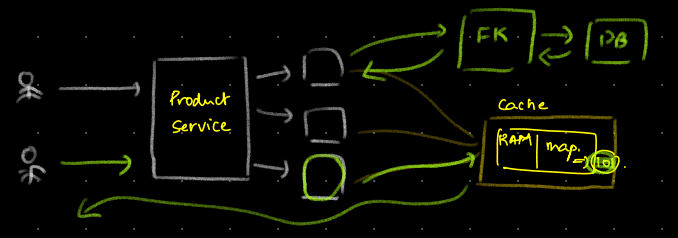About Lesson
Instead of caching the data on the application server, we cache the data on a separate machine.
It is a centralized caching mechanism that is accessible by multiple servers or services within a system. It stores frequently accessed data in memory to improve performance and reduce latency for data retrieval. By having a global cache, the system can avoid redundant requests to external services or databases, thereby enhancing overall efficiency.
Key Characteristics of a Global Cache:
- Centralized Storage: A single, centralized storage that multiple servers or services can access. This ensures that cached data is consistent and available across the entire system.
- Improved Performance: By storing frequently accessed data in memory, a global cache can significantly reduce the time it takes to retrieve data compared to fetching it from a database or an external service.
- Reduced Load: Offloads the repetitive data retrieval tasks from databases and external services, thereby reducing their load and improving their performance.
- Consistency: Ensures that all servers or services have access to the same cached data, which helps maintain consistency across the system.
Advantages:
- Avoiding Dependency on Other Services: By using a global cache, we reduce the dependency on external services (such as the FakeStore API). This minimizes the impact of any downtime or slow response times from these external services.
- Fetching Data from Memory, Not from DB: A global cache stores frequently accessed data in memory, which is significantly faster to retrieve compared to fetching data from a database. This leads to improved response times and overall performance.
- Storing Data in the Format the UI Needs: Data can be stored in the cache in the exact format required by the UI, eliminating the need for additional processing before the data is presented to the user. This streamlines the data retrieval process and enhances performance.
Common Technologies for Global Cache:
- Redis: An in-memory data structure store that can be used as a database, cache, and message broker. Redis supports various data structures such as strings, hashes, lists, sets, and more.
- Memcached: A distributed memory caching system that is often used to speed up dynamic database-driven websites by caching data and objects in RAM.
Note: In general, we keep both application server and the cache server as close as possible on the data center.
